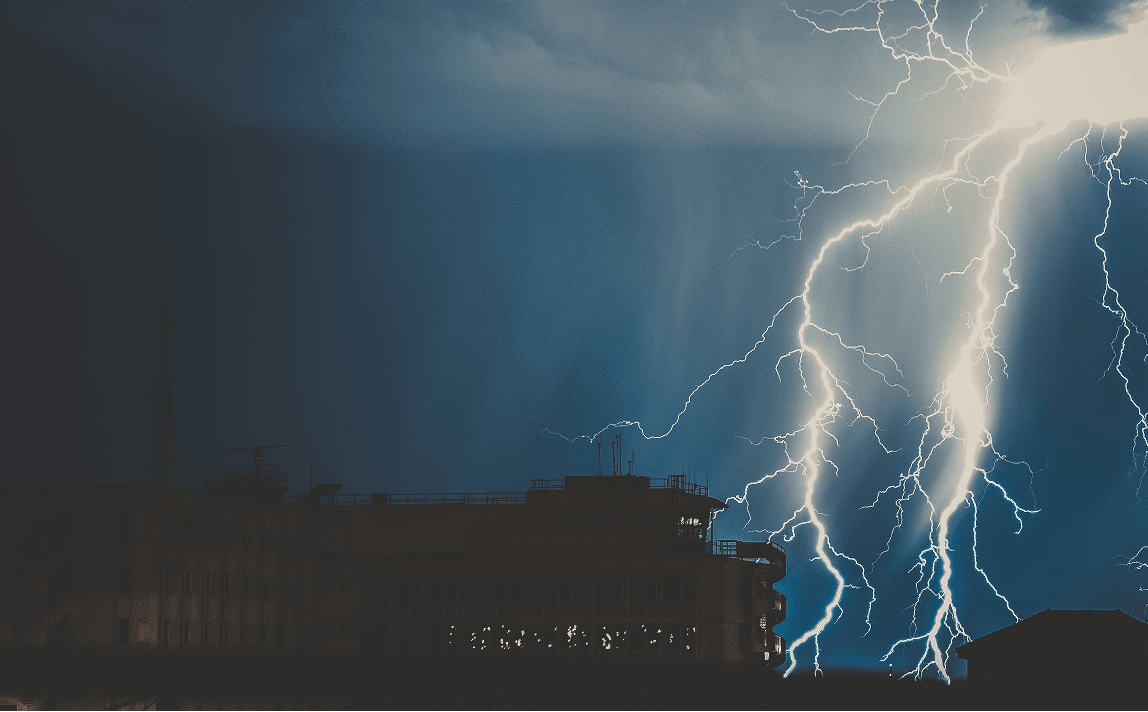Why is the design of a Lightning Protection System and Earthing Important?
Lightning is an awe-inspiring natural phenomenon that can discharge up to 200,000 amps in a fraction of a second. A direct strike can have devastating effects on people, buildings and the natural environment. Beyond the obvious impact of lightning, the voltage spikes that accompany even indirect strikes can be catastrophic to a building’s electronic systems. With the advent of sensitive electronic equipment in our everyday life in recent, the importance of proper protection has become extremely critical. In this blog, get an overview of the design of the lightning protection system.
In order to fully protect themselves, buildings and other structures must use Lightning Protection and Earthing equipment that has been designed and tested according to the best international standards. Axis products, which are designed in accordance with these international standards, help customers identify the risks and solutions to any lightning protection and earthing needs.
Standards
IEC 62305 – Protection Against Lightning, is the apex level document that informs the standards for lightning protection around the world. Axis’s Risk Assessment software and our lightning protection and earthing products are designed to work with systems designed as per IEC 62305.
UL 467: Grounding and Bonding Equipment and UL 96A: Installation requirements for the lightning protection system are two other important standards that are followed in the United States, Canada and other parts of the world.
Design of Lightning Protection System
The first step in the design of a lightning protection system is Risk Assessment. Axis’s Risk Assessment software uses a range of parameters that allow users to determine the risk and thus the Class of Lightning Protection System (LPS) that is required for their specific structure.
Based on this, you can now design the external and internal protection systems for your building. The External protection system would include an Air Termination, Down Conductor and an Earth Termination System. For internal protection, one would use surge protection devices and equipotential bonding.
The positions of the Air Termination can be decided based on the rolling sphere method, the protective angle method and the mesh method. The rolling sphere method can even be used to define the zones of protection for structures with complex geometry. The radii for the sphere is determined directly from the Class of LPS. The Protection Angle method is used for simple structures but only up to a certain height as determined by the class of LPS. The Mesh Method is best used for flat surfaces where the air termination conductors are to be placed at the roof edges and where no other metallic structure will be above the air termination system.
Axis Air Termination Rods are made from high-grade electrolytic Copper that provides the highest conductivity to allow the flow of high-intensity lightning strikes preventing any damage to the structure or equipment.
Non-Conventional Air Termination Systems
According to IEC-62305, the zone of protection determined for an air termination system shall be defined only by the physical size of the system and there is a lack of proof if this zone cannot be enhanced, as claimed by manufacturers of other technologies.
Down Conductors
Down conductors, connected to the Air termination system with suitable products, should take the most direct route down the structure, with spacing between each one defined by the Class of LPS. IEC 62305 also allows the use of rebars inside concrete structures to be used as down conductors under certain conditions.
Earth Termination
An Earth Electrode should provide low electrical resistance with the earth to allow for the dissipation of currents. It should also be resistant to corrosion because it will be buried underground for a long period of time.
Worldwide, one of the most popular Earth Electrodes is copper bonded earth rods, which comply with IEC 62561 Part 2. Since electricity is a surface phenomenon, the copper layer allows for a conductive path while the inner core of high strength steel provides the strength required for driving the rod inside the ground. Axis Copper Bonded Earth Rods have been are approved by Utilities across the world and continue to be popular due to their consistently high quality.
Internal LPS
This is a crucial aspect of the design of a lightning protection system. The two major components of internal LPS are Equipotential bonding and surge protection devices (SPDs). The purpose of Equipotential Bonding equipment is to bring all the metallic parts and equipment in a structure to the same Voltage Potential, to avoid hazards to human life or other damage. SPD’s protect the electronic devices by breaking the circuit in case of an equipment system fault.
Conclusion
Axis has been manufacturing and supplying lightning protection and earthing equipment internationally since 1994 and has a proven track record of high-quality protection. Our customers include utilities, Government Organisations, and private projects across the globe.
To learn more about Axis or our products, please feel free to contact us through our Contact Us form.

